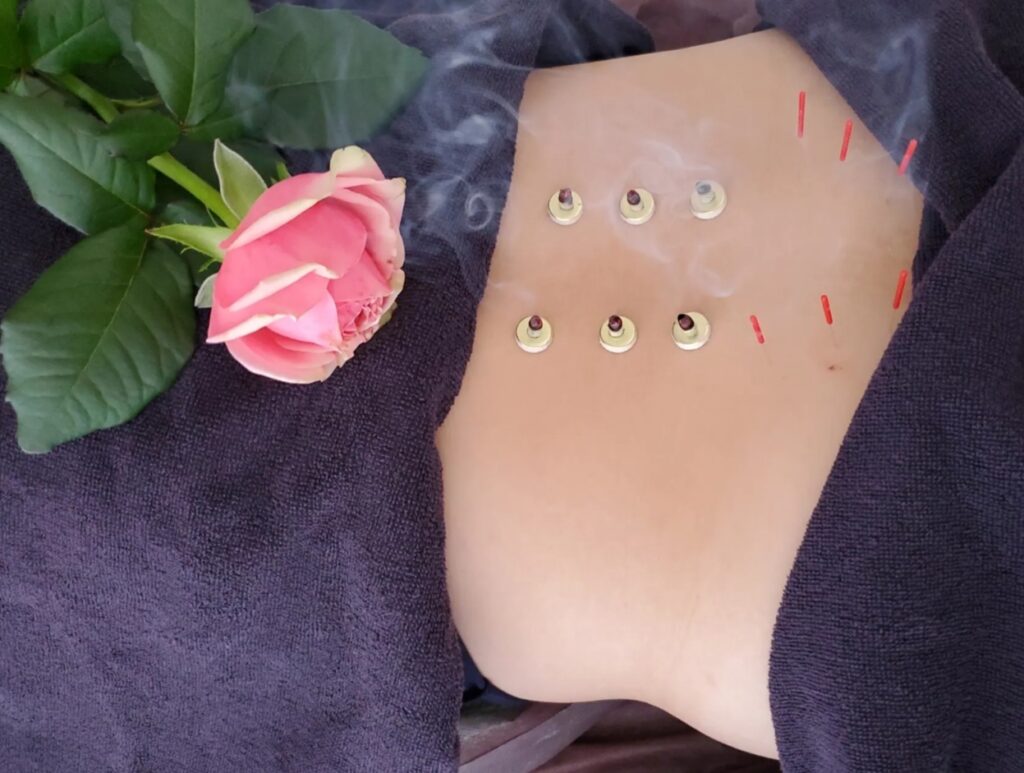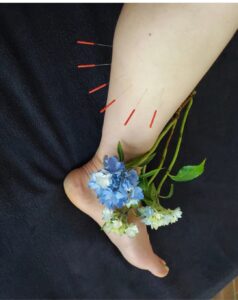椎間板ヘルニア
Herniated Disc
脊椎は、椎骨とよばれる骨が連結したものです。 頭側から頚椎7個、胸椎12個、腰椎5個があり、その下に、仙椎、尾骨と続いています。椎骨と椎骨の間には椎間板があります。 中心はゼリー状の髄核で、その周辺は線維で層状に覆われています。 脊椎にかかる負担を柔らかくするクッションの役割をすると同時に、脊椎が動くことを可能にしています。腰は、腰椎5つの椎骨で構成され、椎骨と椎骨の間にはクッションの役割をする椎間板があります。その椎間板に何らかの原因でひびが入り、椎間板の内部にある髄核というゼリー状の組織が一部、飛び出して、神経を圧迫するのが、椎間板ヘルニアです。椎間板ヘルニアの発症理由の1つには遺伝も関係があると言われています。椎間板ヘルニアの症状は、腰痛から始まり、その後、お尻や脚にしびれや痛みが生じることが多いです。腰痛の原因となるほかの症状としては、腰部脊柱管狭窄症があります。見分け方は、腰部脊管狭窄症は、おじぎをしたり椅子に座るなど、前かがみなどの姿勢のときに、症状が楽になります。反対に、椎間板ヘルニアは、おじぎをしたり椅子に座るなど、前かがみの姿勢のときに、症状が強まるのが特徴です。症状が強く現れるのは、神経への圧迫や、精神的なうつ、不安、ストレスも原因になります。このうち、うつ・不安・ストレスなどの精神的要因は、症状を長引かせ、慢性腰痛の原因なったりもします。椎間板ヘルニアの多くは、何の対策をとらなくても発症から数か月で自然に消滅すると言われています。しかし、すべての椎間板ヘルニアが自然に消えるわけではなく、消えやすいのは、髄核が椎間板と神経の間にある後縦靭帯を突き破っている場合です。その場合は、免疫細胞が反応して飛び出した髄核を食べるため、ヘルニアが自然に消えるという現象が起きます。そもため飛び出した椎間板がいつまでも飛び出したままと言うことはありません。椎間板の脱出が起こると炎症が起こり、飛び出した部分を、マクロファージ(食細胞)によって吸収されていきます。髄核が後縦じん帯を突き破っていない場合は、免疫細胞が反応しにくいため、椎間板ヘルニアは自然に消失しずらくなります。椎間板ヘルニアにおける鍼治療の目的は、第一に神経の炎症を抑えることです。神経の炎症が治まると、痛みは軽減されます。鍼灸治療はもともと血流の改善、体内疲労物質の除去を得意としている治療法です。疲労している筋肉や椎間靭帯の付近に鍼灸治療を加えることで、背骨を支える筋肉と椎間どうしの緊張が緩み、椎間板にかかる負担を減らします。
The spine is made up of interconnected bones called vertebrae. From the head, there are 7 cervical vertebrae, 12 thoracic vertebrae, and 5 lumbar vertebrae, followed by the sacral vertebrae and the tailbone. Between the vertebrae are intervertebral discs. The center is a jelly-like nucleus pulposus, and the surrounding area is covered with layers of fibers. It acts as a cushion to soften the strain on the vertebrae and at the same time allows the vertebrae to move. The lower back consists of five lumbar vertebrae, and between the vertebrae is an intervertebral disc that acts as a cushion. A herniated disc occurs when the disc cracks for some reason and a portion of the jelly-like tissue inside the disc, called the nucleus pulposus, protrudes, putting pressure on a nerve. Heredity is said to be one of the reasons for the development of a herniated disc. Symptoms of a herniated disc often begin with back pain, followed by numbness and pain in the buttocks and legs. Other conditions that can cause back pain include lumbar spinal stenosis. To distinguish between the two, lumbar spinal canal stenosis is relieved when the patient is in a posture such as bending forward, such as bowing or sitting in a chair. On the contrary, a herniated disc is characterized by symptoms that are intensified when the patient is in a stooped posture, such as bowing or sitting in a chair. Symptoms may also be intensified by pressure on nerves, as well as mental depression, anxiety, and stress. Mental factors such as depression, anxiety, and stress can prolong symptoms and cause chronic back pain. Most herniated discs disappear spontaneously within a few months of onset, even if no action is taken. However, not all herniated discs disappear spontaneously, and those that do are more likely to disappear when the nucleus pulposus has penetrated the posterior longitudinal ligament, which lies between the disc and the nerve. In such cases, immune cells react and eat the ejected nucleus pulposus, causing the herniation to disappear spontaneously. In the first place, a prolapsed disc does not stay prolapsed forever. When a prolapsed disc prolapses, inflammation occurs and the prolapsed portion is absorbed by macrophages (phagocytes). If the nucleus pulposus has not penetrated the posterior longitudinal ligament, the immune cells are less likely to react and the herniated disc will not resolve spontaneously. The first goal of acupuncture in herniated discs is to reduce nerve inflammation. Once the nerve inflammation subsides, the pain is reduced. Acupuncture has always been good at improving blood flow and removing fatiguing substances from the body. By applying acupuncture near fatigued muscles and intervertebral ligaments, the tension between the muscles and intervertebral ligaments that support the spine is relaxed, reducing the load on the intervertebral discs.

#腰痛 #腰痛い #腰痛改善 #腰痛解消 #hernia #diskdisplacemen # slippeddisk
#腰痛予防 #ぎっくり腰 #backpain #backpainrelief


